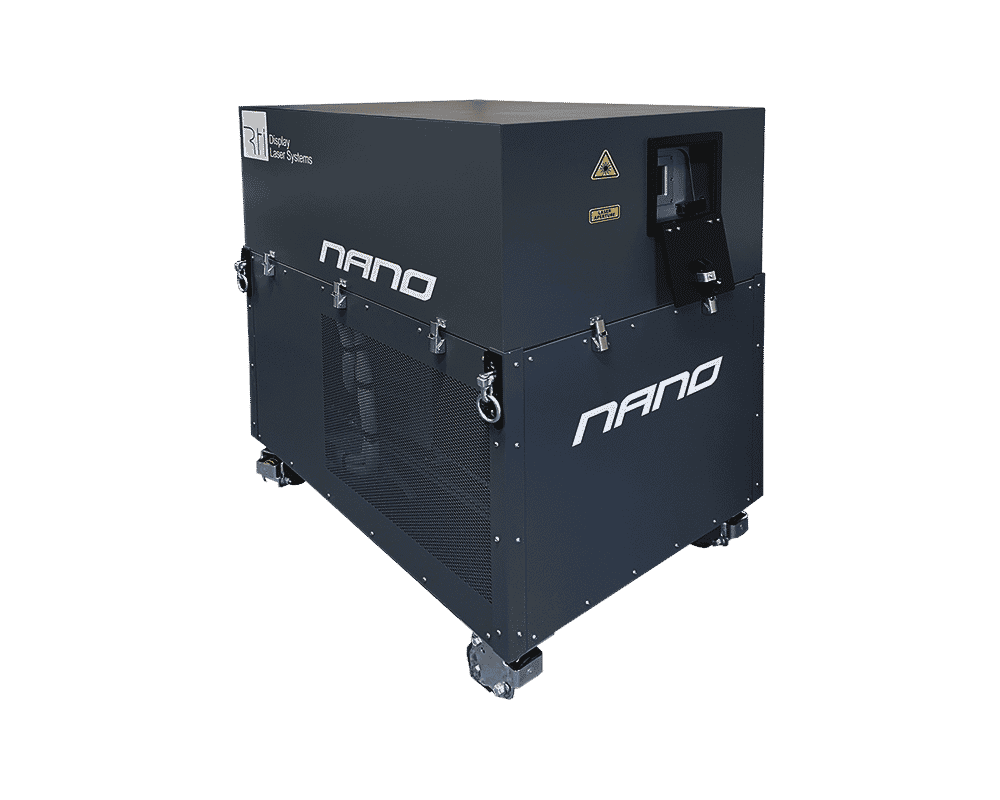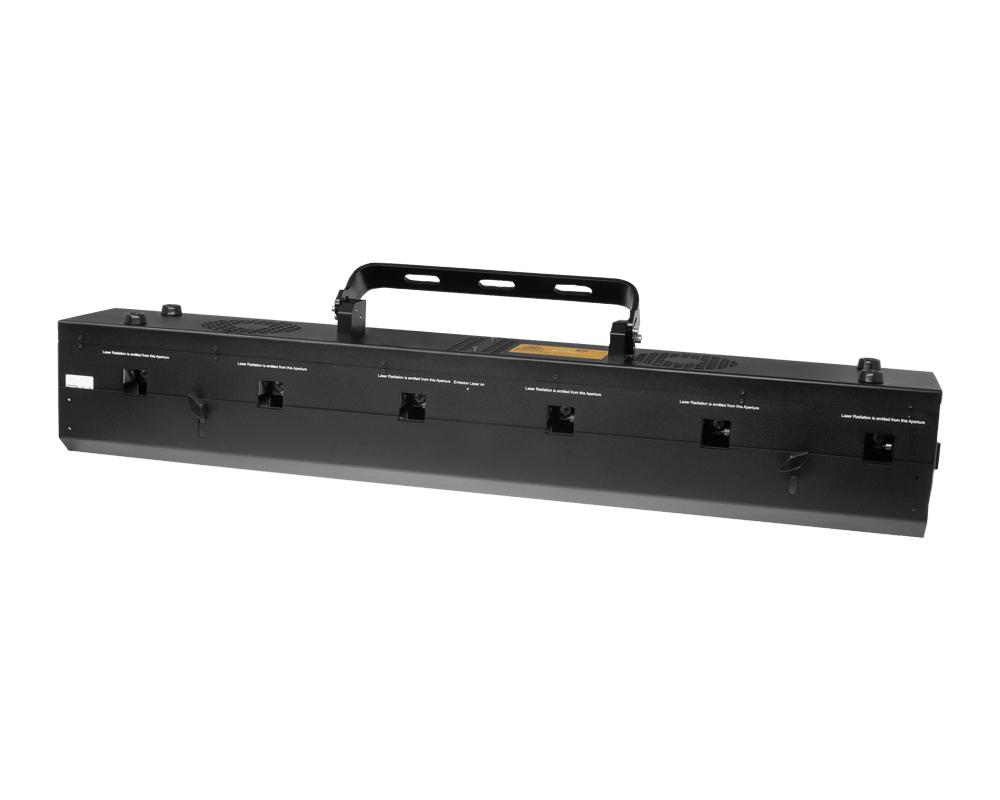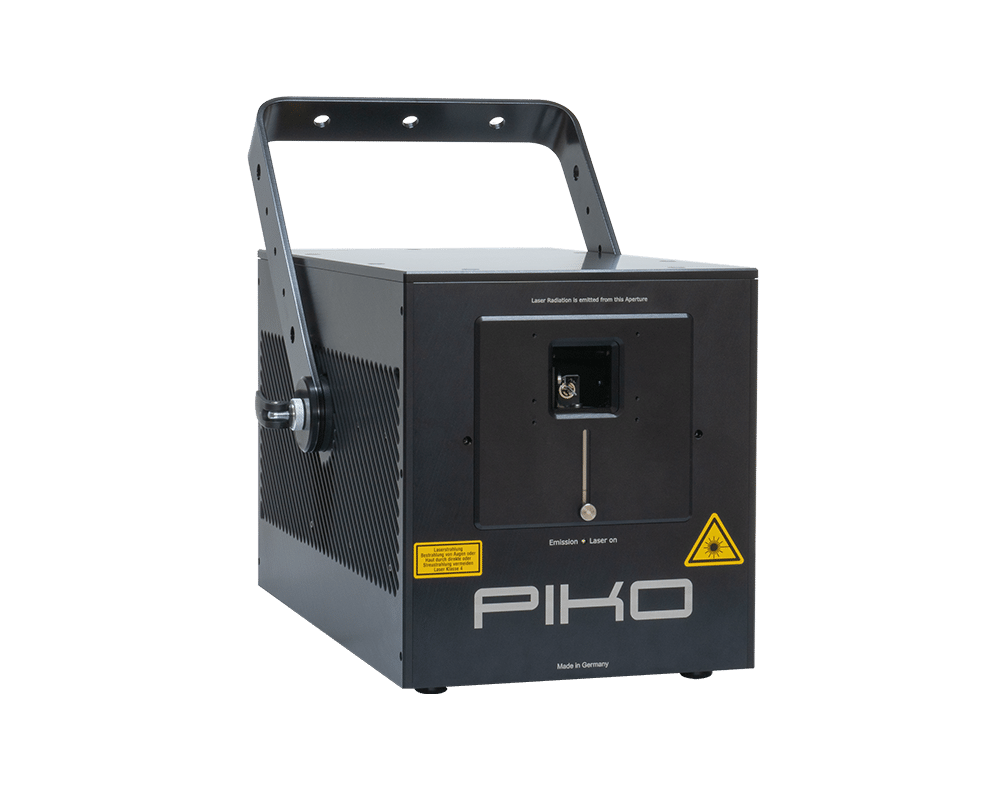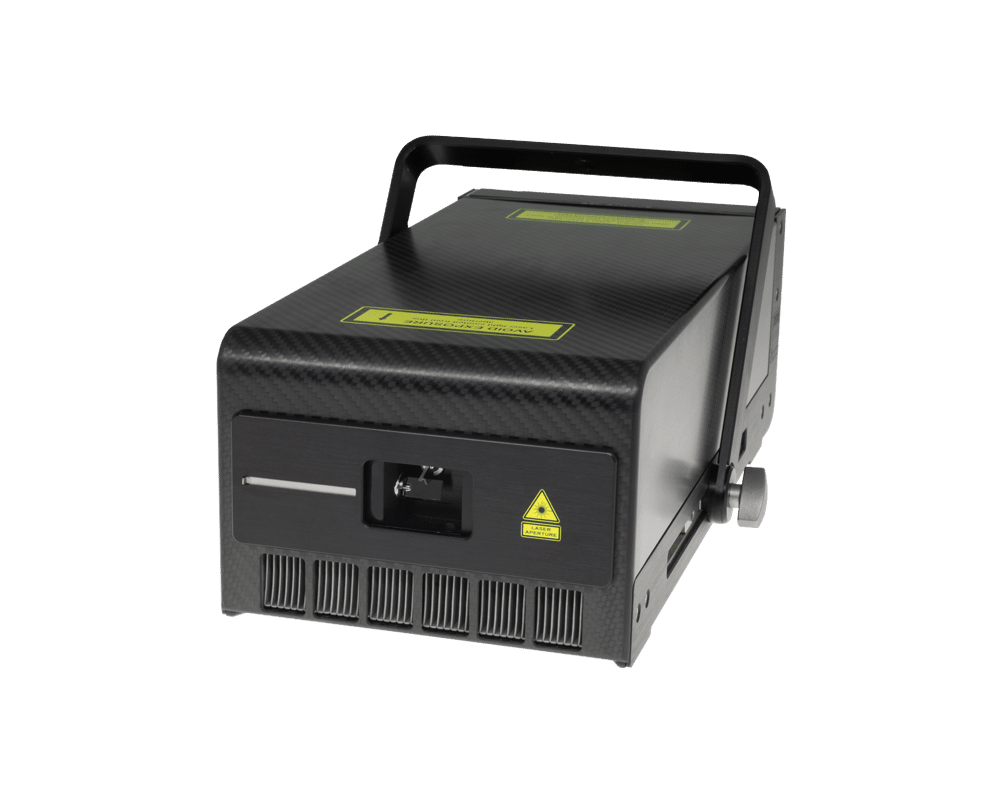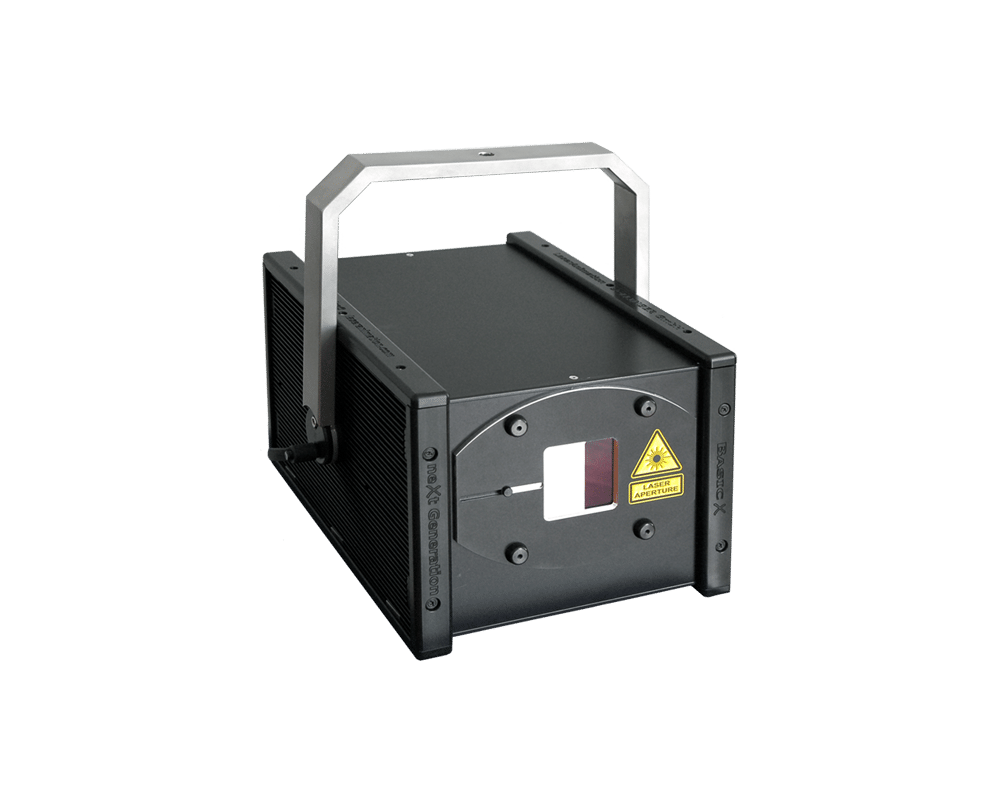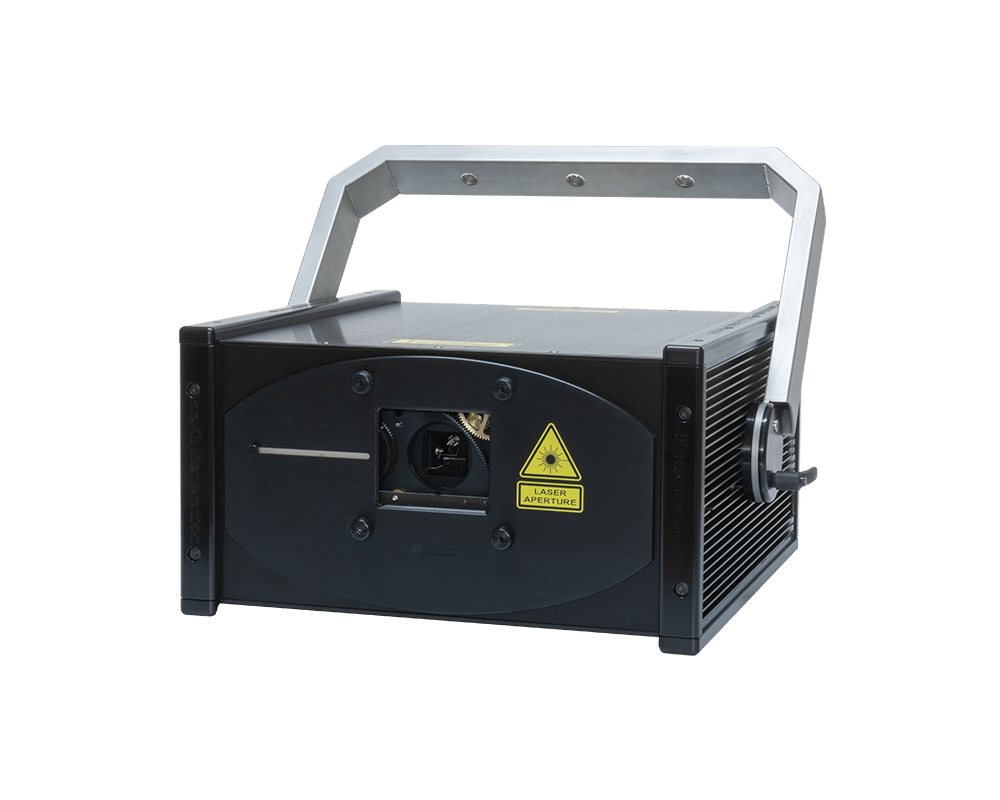The RTI NANO 150 stretches the physical boundaries of current show laser light technology: With 150 W RGB output power and professional scanners with 38 kpps @ 8° ILDA and 25kpps at a maximum deflection of 48° it claims a class for its own. The RTI NANO 150 is a 150 W full-color laser system built with high precision laser modules from the latest generation of RTI semiconductor laser technology (RSL). With these high single color powers, it is no problem to create brilliant laser beams that are still visible from a very long distance. The RTI NANO 150 is also graphics capable: Projections to far distance surfaces, like mountains or high buildings, can be done as well as astonishing aerial effects that cover a huge area. Typical applications for this unit are sky laser or landmark laser use, long distance and large scale projections towards big surfaces, but it can also be THE special effect for any type of large scale event. The RTI NANO 150 has its own active cooling system, which keeps all sensitive components at a constant temperature level, no matter what the ambient conditions are, allowing the unit to operate between -20° and +60° C. The AC unit is integrated to the housing, so no additional external devices are required, which makes transport, handling and mounting quite easy for the power level of this unit. The intelligent LaserAnimation Sollinger Mainboard is integrated into the laser projector, which provides the laser operator with a variety of control and setting options (e.g. via the LA.toolbox) or transmission options (such as AVB). Together with the ShowNET laser mainboard, which is also integrated, ILDA, LAN (software), DMX and ArtNET control, ILDA streaming, stand-alone operation, among others, are available, ensuring the highest possible flexibility. Even though the RTI NANO 150 creates such extreme laser powers, the size of the laser beam as well as the divergence is kept extremely low, so it is possible to use small scanner mirrors for fast, professional graphics display. It also maintains a very low widening of the beam over distance (divergence), which makes the laser beam travel over longer distances and keeps up visibility: With a divergence of only <0.9 mrad the RTI NANO 150 is truly outstanding at the power it provides. Due to its energy efficient design, the RTI NANO 150 only requires a 3 phase 16A CEE power connection, with an overall maximum power consumption of only 6 kW.

